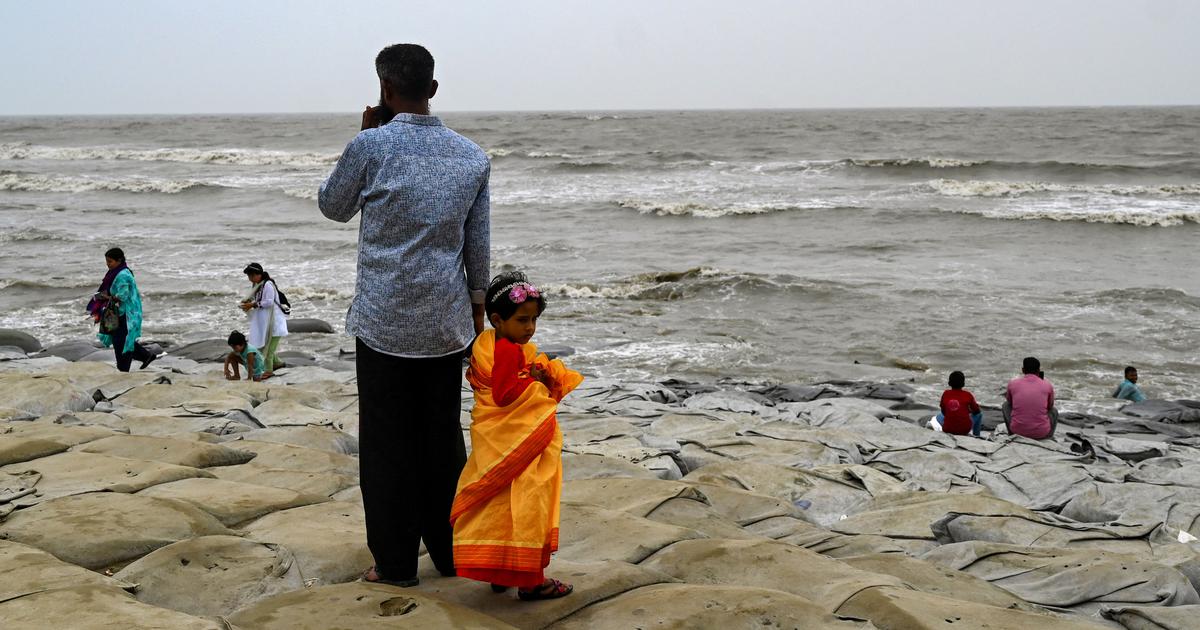On July 23, the International Court of Justice delivered a landmark ruling on the climate crisis. As the highest judicial institution in the world, its word should carry weight, and climate justice movements have welcomed it.
But will it be sufficient to transform the current situation in which the worst offenders – rich, industrialised states and the rich in poorer countries – continue to evade their responsibility?
The ruling is based on a request made by the United Nations General Assembly, to provide an opinion on the obligations of states to address climate change under international law and the legal consequences for failing to deliver on those obligations. This was based on a resolution that 132 states co-sponsored in 2023. As many as 99 states made submissions to the International Court of Justice.
The ruling, unanimously issued by its 15 judges as an advisory apinion to all countries, is long and complex. In a nutshell, it has:
- · Accepted the dire scenarios of the climate crisis as portrayed by the Intergovernmental Panel on Climate Change, noting that it is “an existential problem of planetary proportions that imperils all forms of life and the very health of our planet”;
- Asserted that all states have an obligation to act to reduce the causes of climate change, including “taking mitigation and adaptation measures, with due account given to the protection of human rights, the adoption of standards and legislation…”
- Stated that such obligations are not only under international treaties related directly to climate (United Nations Framework Convention on Climate Change and the Paris Agreement), but also under other environment and human rights treaties, customary international law (such as the duty to prevent significant harm to the environment) and accepted principles (such as the responsibility to protect the rights of future generations).
Some submissions made to the court, such as that of US, argued that state obligations under climate treaties are flexible and subject to its domestic priorities. While there is an accepted principle of “common but differentiated responsibilities” in the climate treaties, the intent of this is to put less of a burden on poorer countries, not to enable rich ones, who have been historically responsible for the bulk of climate change emissions, to escape their responsibilities.
The International Court of Justice is clear on this: “Failure of a State to take appropriate action to protect the climate system from GHG emissions – including through fossil fuel production, fossil fuel consumption, the granting of fossil fuel exploration licenses or the provision of fossil fuel subsidies – may constitute an internationally wrongful act which is attributable to that State.”
And further, that: “Customary obligations are the same for all States and exist independently regardless of whether a State is a party to the climate change treaties.”
Regulating ‘private actors’
The ruling also places on states the responsibility to regulate the activities of “private actors” that are under its jurisdiction or control. This is important, given the impunity with which multinational corporations act across the world, getting away with horrendous crimes of ecocide and of killing or injuring people defending their territories.
Also significant is the clear connection the court has drawn between a environment and human rights (previously stated in a resolution adopted by the General Assembly on July 28, 2022). The International Court of Justice says: “the adverse effects of climate change … impact on the health and livelihoods of individuals through events such as sea level rise, drought, desertification and natural disasters, may significantly impair the enjoyment of … the right to life, the right to health, the right to an adequate standard of living, which encompasses access to food, water and housing, the right to privacy, family and home, and the rights of women, children and indigenous peoples … The Court concludes that, under international law, the human right to a clean, healthy and sustainable environment is essential for the enjoyment of other human rights.”
The court also points to state culpability if it fails to take action: “A State that does not exercise due diligence in the performance of its primary obligation to prevent significant harm to the environment, including to the climate system, commits an internationally wrongful act entailing its responsibility.”
It is then subject to various legal consequences, notably the obligation to cease harmful actions, provide “full reparation” that includes restitution measures (such as helping to restore damaged ecosystems) or compensation (where such restitution is not possible) and others.
There are aspects on which the ruling could have been stronger or clear. The principle of equity, for instance, could have been deepened with reference to how, for instance, major polluters need to take urgent action vis-à-vis small island states (whose youth were the first to initiate action that led to the ICJ taking up climate change), or other badly affected communities.
This has been noted in a separate opinion of a couple of the judges, appended to the main ruling. The principle of the rights of nature and species other than humans, could have been invoked – there are only a couple of passing references to the threats to “all life” and some species. It could also have more clearly stated that climate action itself should not endanger human and environmental rights or the principle of equity, as one sees in the global push for minerals and materials for the so-called “energy transition”.
Jurisdictional challenges
The greatest concern, however, is in aspects not necessarily under the jurisdiction of the International Court of Justice. Both nation-states and private corporations, especially the most powerful amongst them, are today already flouting global treaties and norms with impunity. The hard-fought gains of the latter part of the twentieth century, both in national and international policy-making, spurred by massive people’s mobilisation, are being openly thrown out or ignored by presidents, prime ministers and heads of corporations. In such a situation, what potential does this ruling have to turn things around?
Very little, unless, like any legal or policy tool, it is used by people. Not only to push governments and corporations in their own countries, but as moral backing for groun- level actions of boycott, resistance, blockages, consumer action and more. Climate justice mobilisation by or with farmers, fishers, Indigenous peoples, workers, youth, women, and others who have been thus far marginalised in decision-making, is gaining ground across the world. This includes both resistance and protest, as also constructive alternatives to meet human needs and aspirations while protecting nature and reducing inequities.
The ruling could provide important an important boost to them to confront the capitalist and statist minority that is responsible for planetary ruin, not only between but also within countries. As the International Court of Justice itself notes, beyond the formal legal avenues of action, “a lasting and satisfactory solution requires human will and wisdom – at the individual, social and political levels – to change our habits, comforts and current way of life in order to secure a future for ourselves and those who are yet to come.”
Ashish Kothari is with Vikalp Sangam and Global Tapestry of Alternatives.










